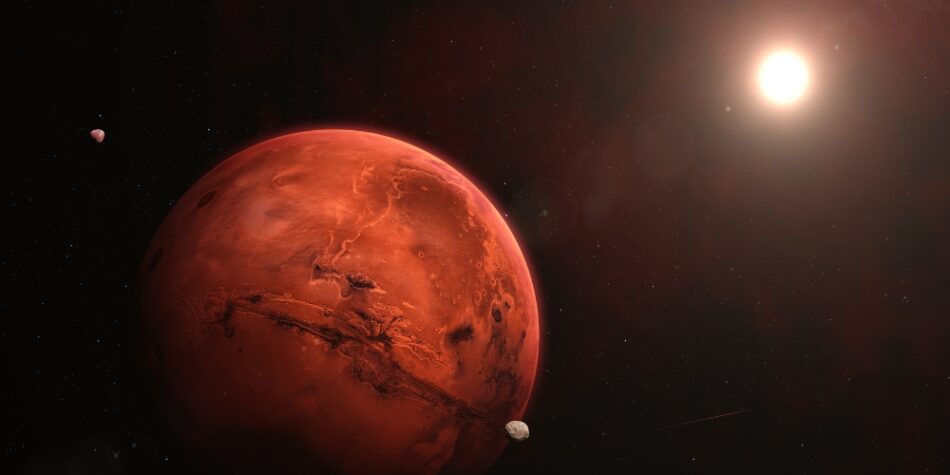If you’re excited about the Wolf Moon this week—the first full Moon of 2025—you’re in for a spectacular show, as the planet Mars will be prominently visible alongside it in the night sky.
On January 13, around 19:30 UTC, head outside and look toward the east to see the full Moon rising higher in the sky, according to a report by the BBC.
Just beneath and slightly to the left of the Moon, you’ll spot a reddish “star,” which is actually the planet Mars.
In the United States, observers will also have the chance to witness the fascinating Wolf Moon lunar occultation of Mars.
Throughout the night, the Moon and Mars will appear to move closer together, ascending higher into the sky and shifting southeast as midnight approaches.
The term “Wolf Moon” refers to the full Moon that occurs in January, the first full Moon of the calendar year.
Each month’s full Moon has an informal nickname, often inspired by seasonal natural phenomena. The name “Wolf Moon” likely originates from the increased activity of wolves in January, as they remain active through the winter months.
January is an ideal time for observing Mars, thanks to long, dark nights. This year, January offers an especially great viewing opportunity because Mars reaches opposition on January 16.
In astronomy, opposition occurs when Mars is directly opposite the Sun in the sky, making it appear especially large and bright—perfect conditions for observation.
From January 12 to 16, stargazers can enjoy excellent views of Mars with a telescope, revealing its surface features in detail.
Even after opposition, Mars will remain bright and prominent, with favorable positioning in the night sky throughout January.
For those observing with the naked eye, the bright Mars will accompany the January 2025 full Moon—the Wolf Moon—in the sky.
Starting at approximately 19:30 UTC on January 13, the full Moon will rise in the eastern sky, with Mars visible below and to the left.
By 22:30 UTC, the Moon and Mars will appear closer together, having risen higher in the southeast.
As midnight approaches, Mars will be located to the left of the Moon, with both celestial objects prominently positioned in the southern sky.


